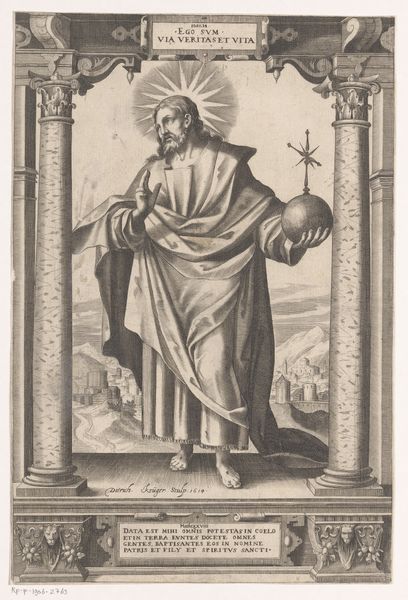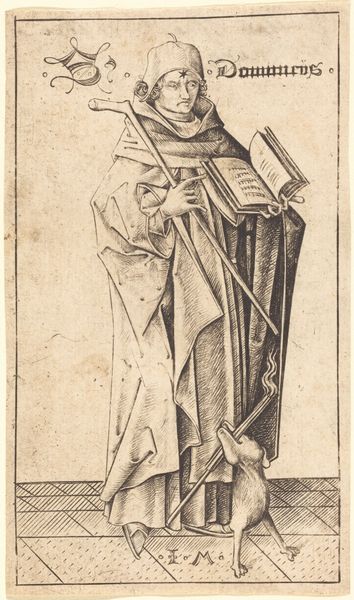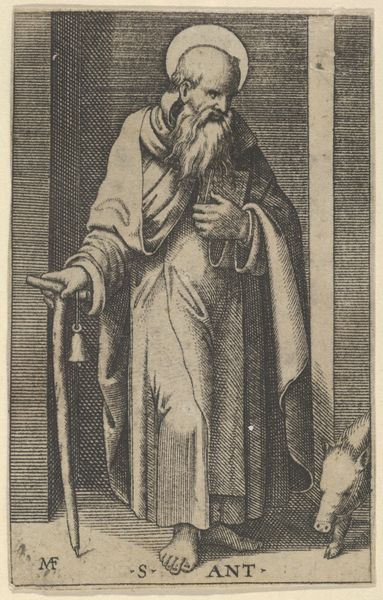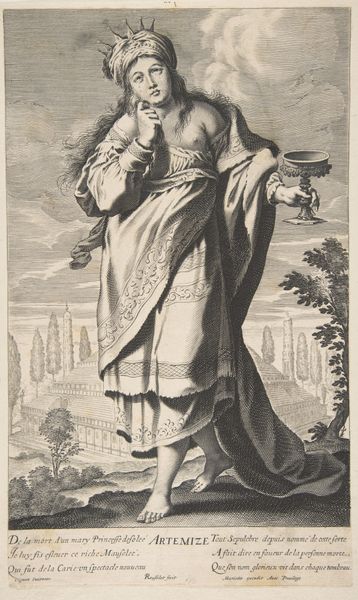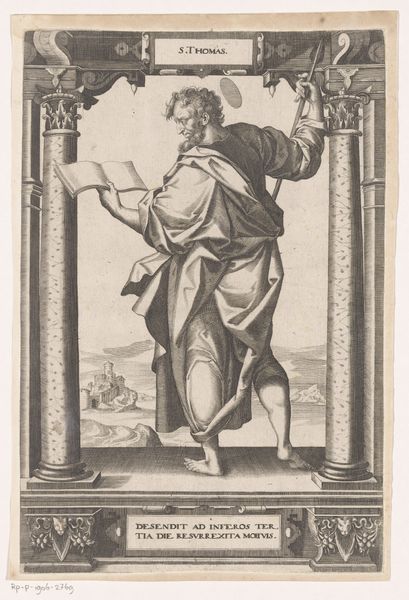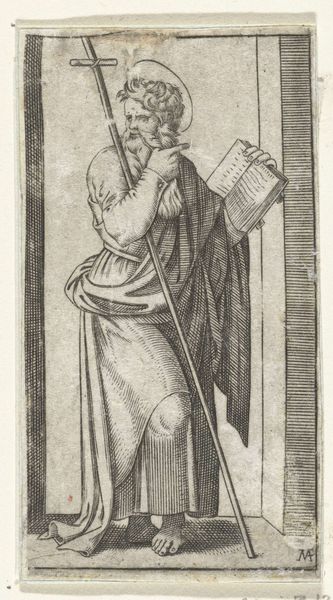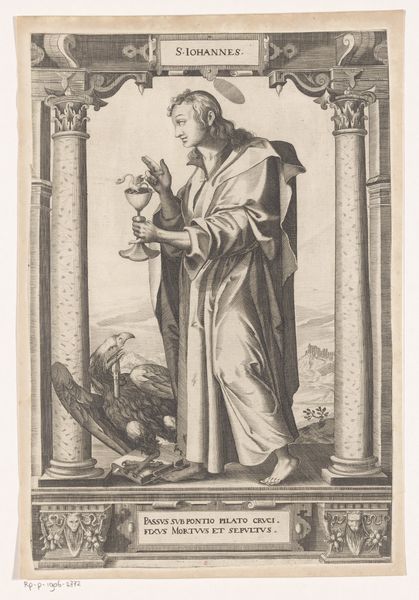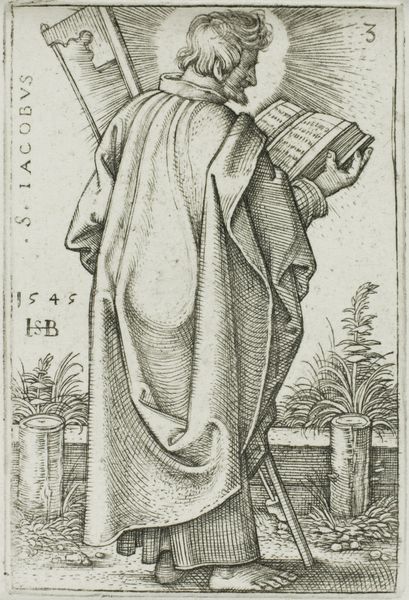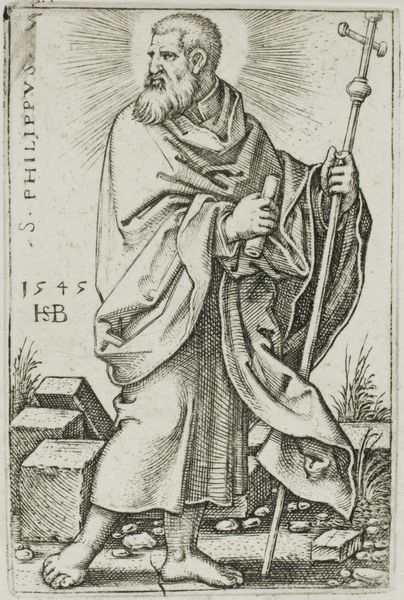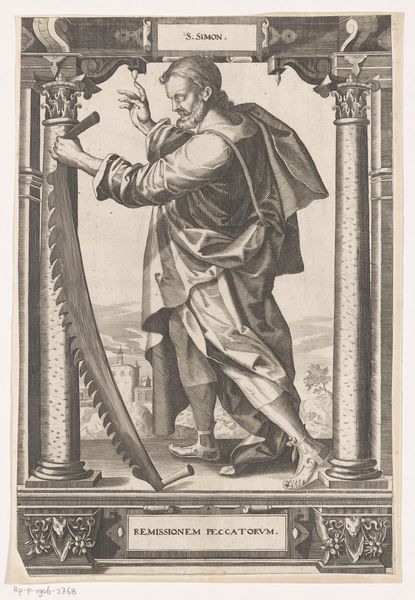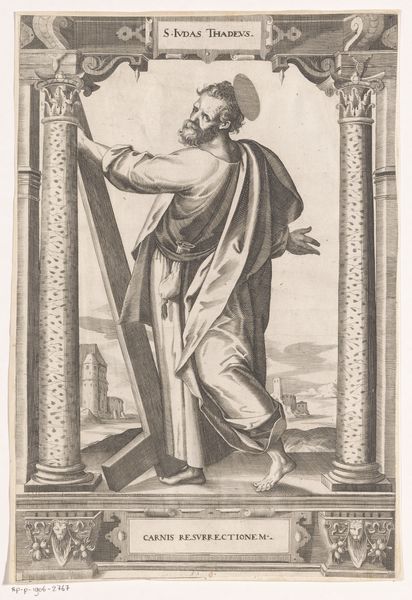
print, engraving
#
portrait
#
baroque
# print
#
old engraving style
#
caricature
#
portrait drawing
#
history-painting
#
engraving
Dimensions: height 324 mm, width 214 mm
Copyright: Rijks Museum: Open Domain
Editor: Here we have "Mattias de apostel," an engraving made in 1614. The detail is incredible. There’s a certain austerity to the figure. I wonder, how do you interpret this work, given its historical context? Curator: It's interesting you use the word 'austerity.' Think about the power structures at play in 17th-century Europe. Prints like this weren't just devotional images; they were tools for shaping religious and political identity. Consider the prominent display of the axe - Matthias's symbol of martyrdom. Editor: Yes, I noticed the axe, almost like a prop, and the book. Curator: Exactly! The book and the axe present conflicting signs. What’s the relationship between knowledge, faith, and power here? The printing press allowed for wider dissemination of ideas, challenging the authority of the Church but this image is clearly not an outright rebellion, but it’s still asking you to look critically. It portrays a martyr with an implement that has complex association with persecution *and* social reform, yet contained within an aesthetically pleasing medium, and what appears to be an objective portrait. It presents more questions than answers. Editor: So the artist seems to subtly weave some questions. It's really thought-provoking. Curator: And notice his bare feet; an inclusion of humbleness that counters his association with colonial endeavours in many paintings of that time. Krüger cleverly uses him as a canvas of a more humane way forward in Europe's turbulent times. How do we see Matthias' story resonating today, when narratives of faith and power continue to shape global events? Editor: I hadn't considered the bare feet aspect, how artists were making a silent judgement against colonisers' inhumane behaviour, very covert, to avoid political repercussions. Curator: Right, thinking about the communities and groups the Western canon has silenced makes me rethink so many older artworks. The beauty of art history is that there is always room for change. Editor: Absolutely. I will always see such engravings differently now.
Comments
No comments
Be the first to comment and join the conversation on the ultimate creative platform.
